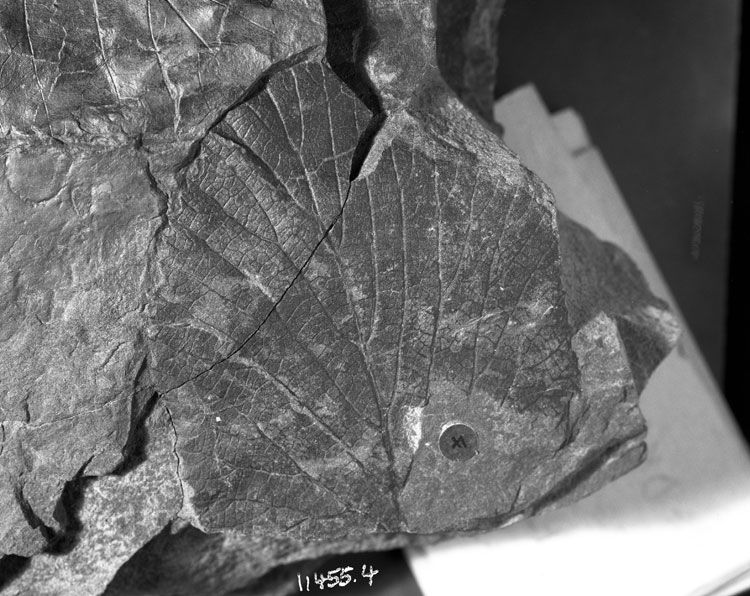Locality
USGS 11611
Lat. 60° 01' 46"N Long. 165° 22' 42"W
Nunivak Island (C-1) Quad.
Description
Leaf: simple; symmetrical; suborbiculate; apex missing (obtuse ?); base peltate; margin dentate, teeth with obtuse angular apices, shallow rounded sinuses, more or less regular in size and spacing; venation marginal imperfect actinodromous but with a very strong pinnate appearance; primary midvein moderate, more or less straight or slightly curved; pectinals weak, arising at an angle of 35-40°, more or less straight; branching repeatedly, pectinal abmedials at angles of 25°; basal abmedials usually branching repeatedly, craspedodromous; superior secondaries arise from the midvein at angles of 35°, subopposite or opposite, initially slightly curved or straight, dichotomizing once or twice before terminating as the medial veins of the teeth, branching becoming less frequent near the apex; tertiary veins transverse percurrent simple or forked, convex or more or less straight, joining both ad- and abmedial sides of the secondary veins at right angles; fourth order veins transverse, orthogonal reticulate.
Remarks
This hamamelid leaf is distinct from the common 'platanoid' forms in a number of respects. The overall venation pattern is actinodromous but the pectinals are weak and of the same strength as the secondaries. Branching in both the pectinals and secondaries is the result of dichotomous splitting. Third and fourth order veins are of almost equal strength and pronounced.
Among the extant hamamelids the leaves which display characters closest to those seen in the fossil specimens belong to the Eupteleales. The Eupteleales typically have 'pinnate' venation with secondary veins congested towards the base, which Hickey and Wolfe (1975) suggest might indicate an actinodromous origin. Specimen USGS 11611.4 has an extremely strong pinnate appearance produced by the reduction of the pectinal veins and the comparatively strong and numerous parallel secondaries but does not display basal congestion of the secondaries. The teeth are of the Platanoid type and are more or less regular in size and spacing. The strong pinnate appearance to the venation is enhanced by the numerous oppositely arranged secondary veins which commonly fork near the margin. A very similar form is Protophyllum schmidtianum (Krassilov, 1979; Plate 35, Figs. 1-4) (Coniacian).
